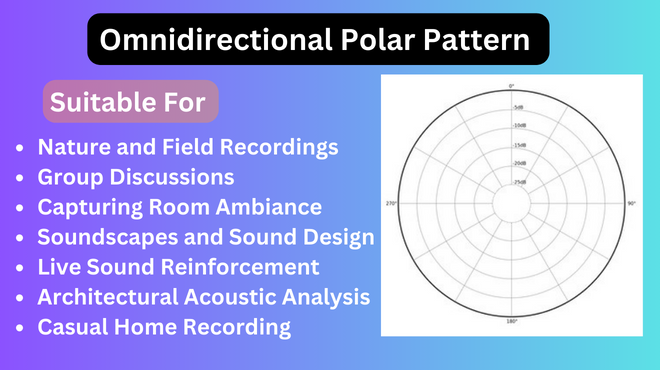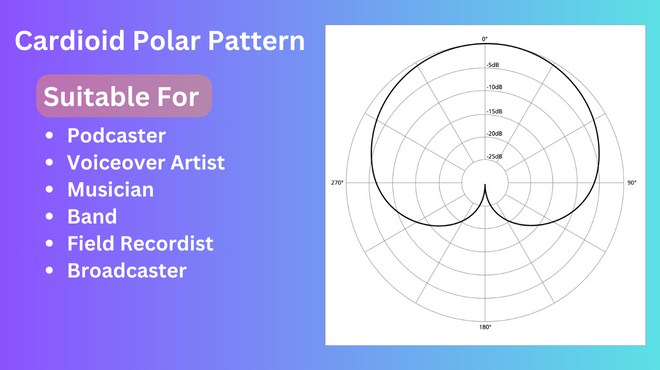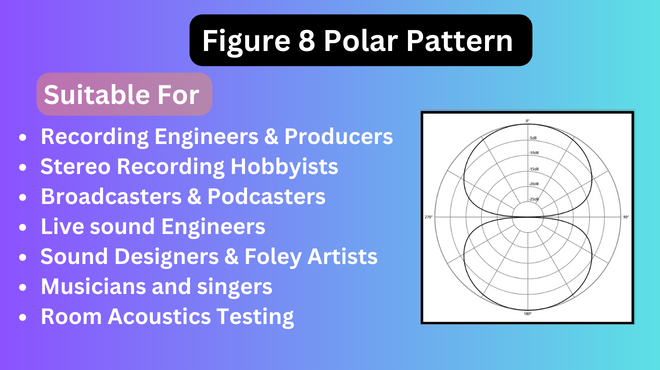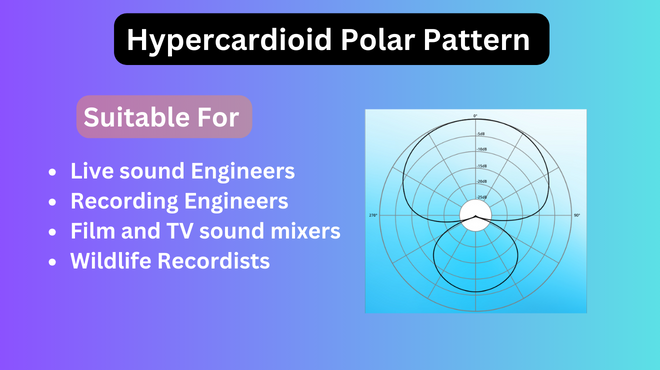Introduction:
Omnidirectional Polar Pattern provides a 360-degree field of sound recording and has altered the way we record and replay music, is a key idea in the realm of audio technology. This polar pattern illustrates how a microphone’s spatial sensitivity affects how it picks up sounds coming from different directions. Let’s set out on a voyage to delve into its intricate technical details, discover its many uses, and learn about its fascinating past.
History of the Revolution:
The Omnidirectional Polar Pattern’s development in audio technology is a revolutionary one. It all started when early 20th-century innovators in audio realized the necessity for microphones that could uniformly record sound from all directions. Compact omnidirectional microphones were developed as a result of developments in electret technology in the middle of the 20th century, which completely changed the way audio was recorded. This technology is now being improved through continuing research and development to keep it at the cutting edge of innovation.
Technical Information:
Omnidirectional microphones are carefully designed to record sound equally from all directions, guaranteeing that no detail is lost. A perfectly balanced diaphragm and acoustic ports that enable sound waves to enter the microphone from any direction are features of their design. Both audio pros and hobbyists must comprehend the science behind these patterns.
What is an Omnidirectional Polar Pattern?
A microphone’s capacity to evenly pick up sound from all directions is referred to as an omnidirectional polar pattern. It has ears all around like a microphone, so imagine it as having no preferred direction. This kind of microphone will pick up sound from any angle, whether it is coming from the front, back, sides, or any other angle.
Why should you use a Omnidirectional polar pattern?
The deliberate use of an Omnidirectional polar pattern in audio recording is grounded in the many nuances of microphone technology. It is a pattern that stands out for its distinctive qualities and provides particular benefits in circumstances where other polar patterns would not perform well. Here, we examine the technological foundations and factors that make omnidirectional microphones an important weapon in the toolbox of audio engineers.
1. Equal Sensitivity in All Directions: The Omnidirectional Polar Pattern’s amazing uniformity of sensitivity is at its core varied degrees of sensitivity based on the angle of sound incidence. This technological characteristic is the result of the microphone’s acoustic ports and diaphragm design, which enable sound waves to enter the diaphragm with equal efficacy from any source.
2. Consistent Low-Frequency Response: The low-frequency response of omnidirectional microphones is recognized for being reliable they maintain a more linear bass response in contrast to directional microphones, which can show prominent proximity effects (where bass frequencies are emphasized when the sound source is nearby). When perfect management of the proximity effect is unnecessary or perhaps undesired, this characteristic is essential.
3. Lessened Off-Axis Coloration: Omnidirectional microphones have the technical advantage of minimizing off-axis coloration. Phase cancellation and interference patterns in directional microphones can cause off-axis sound to have different tone characteristics. These problems are lessened by omnidirectional microphones’ consistent sensitivity, which produces recordings with more accurate and uncolored sound.
4. Accurately Capture Natural Ambiance: Omnidirectional microphones excel in accurately capturing the ambient acoustics of a location. This is particularly helpful when it comes to maintaining the natural reverberation and spatial features of a setting due to this they are widely used by sound engineers to record choirs, and orchestras, and to capture the unique acoustics of a given space.
5. Less Critical Mic Placement: Omnidirectional microphones are forgiving in terms of placement, in contrast to some directional patterns that necessitate precise microphone positioning to optimum sound capture. This technical feature offers flexibility and convenience of usage, reducing the demands on the recording process.
6. Phase Coherence: Over the entire frequency range, omnidirectional microphones frequently display good phase coherence. This is vital because preserving exact phase relationships between the microphones is essential for correct stereo image and spatial realism when using stereo recording techniques like spaced pair or binaural recording.
Which microphones use Omnidirectional Polar Patterns?
There are a few different kinds of microphones that use an Omnidirectional polar pattern.
- Large-diaphragm condenser microphones: These are often used in recording studios and are known for their high sensitivity and wide frequency response. Many large diaphragm condenser microphones, like the Neumann U47 and the Rode NT55, have a polar pattern that lets the sound come in from all.
- Small diaphragm condenser microphones: These mics are often used in recording studios and are known for their high sensitivity and fast transient response. Many small diaphragm condenser microphones, like the Shure KSM137 and the AKG C535EB, have a polar pattern that lets the sound come in from all directions.
- Boundary microphones are a type of microphone mounted on a flat surface, like a tabletop or a podium. They are often used in conference rooms, boardrooms, and other places where sound from a wide area needs to be picked up. Many boundary microphones, like the Samson UB1, Samson CM11B, and the AKG CBL410, have a polar pattern that picks up sound from all directions.
- Lavalier microphones are small microphones meant to be worn on the body. They are also called “lapel microphones.” They are often used in the theatre, on TV, in movies, and to improve the sound in live performances. Rode SmartLav and Sennheiser EW100 are some example of this type of microphone.
When would you use an omnidirectional polar pattern?
- Nature Lovers and Field Recordists: People who want to capture natural outdoor sounds like birds, wind, or water in a forest or park.
- Podcasters and Group Talk Shows: Folks who record group discussions, interviews, or podcasts with multiple people in one room.
- People in Quiet Studios: Those with really quiet, well-treated recording studios who want the most natural sound possible.
- Live Events: Audio professionals recording live music concerts, theater performances, or events with many performers on stage.
- Room Acoustic Analysis: Engineers checking how a room sounds for things like architectural planning or fixing acoustic issues.
- Casual Home Recording: If you’re recording music or conversations in your living room or bedroom and want a simple setup.
- Sound Designers: People creating special sound effects or immersive audio experiences for movies, games, or virtual reality.
What is Omnidirectional mode?
This mode is highly flexible and is frequently used when you want to record the entire environment or soundscape without concentrating on a single source. Omni mode excels, for instance, when recording a podcast with numerous participants seated around a table or capturing the ambiance of a room for a movie soundtrack. It makes sure that all sound is captured, whether it comes from the front, back, sides, or somewhere else.
What is the difference between cardioid and omnidirectional polar pattern?
Are omnidirectional microphones good for a podcast?
Using omnidirectional microphones for podcasting has certain benefits.
Group discussions: An omnidirectional microphone can pick up everyone’s voices evenly and ensure that no one is left out if your podcast includes several hosts or guests seated around a table. This is excellent for panel-style podcasts or roundtable talks.
Natural Ambience: Omnidirectional microphones are excellent at picking up the background noise in your recording environment. An omnidirectional mic can successfully capture the ambiance of a unique location, such as a coffee shop or the outdoors if you want your podcast to have a feeling of place or are recording there.
Simple: Since you don’t have to worry as much about the microphone’s orientation or placement, omnidirectional microphones are typically simpler to operate. This can be helpful for podcasters who are less experienced or in circumstances when quick setup is necessary.
Cons of Using Omnidirectional Microphones for Podcasting:
Background Noise can be captured with omnidirectional microphones, which also pick up sound from other directions. This can be a disadvantage if you’re recording in a noisy setting because it might be difficult to distinguish the hosts’ or guests’ voices.
Less Voice Isolation: Compared to directional microphones (like cardioid mics), omnidirectional microphones don’t isolate individual voices as well. A directional microphone can be more appropriate if your podcast includes simultaneous speaking and you wish to reduce cross-talk or interference.
Control Over Sound: A cardioid or directional microphone may provide better control and concentrated audio capture if you want fine control over the sound and you want to reduce room acoustics or outside noise.
In conclusion, your particular podcasting setup and objectives will determine if an omnidirectional microphone is suitable for your show. They are effective for some podcast formats, such group conversations or when you want to capture the atmosphere of a specific setting. However, directional microphones like cardioid mics could be a good option if you require more control over sound isolation or are recording in a busy environment. The ideal microphone for your podcast will ultimately depend on your particular requirements and preferences.




